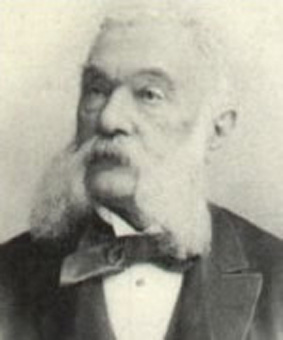Pellegrino Artusi: the father of modern Italian cuisine
- Filio Cilli
- Oct 9
- 2 min read

When we think of Italian cuisine today, we imagine a heritage of recipes handed down by grandmothers and families, varying from region to region. But it was not always so: until the 19th century, Italian cuisine had no “unified voice.” This is where Pellegrino Artusi (1820–1911) comes in — a man who was neither a chef nor an innkeeper, but who, with a single book, changed forever the way Italians cooked and told the story of their food.
An ordinary man with an extraordinary passion
Born in Forlimpopoli, Romagna, Artusi did not have a professional culinary background. He worked in commerce and only later, thanks to a secure financial situation, was able to cultivate his great passion: cooking. He was not the one at the stove, but rather the observer, collector, and chronicler. A tireless enthusiast, he loved experimenting and, above all, sharing.

"Science in the Kitchen and the Art of Eating Well"
In 1891, he self-published “Science in the Kitchen and the Art of Eating Well” ("La scienza in cucina e l’arte di mangiar bene"), a volume that has since become a timeless classic.
The book gathered 475 recipes, collected from family kitchens, friends, and his travels. Over time, Artusi continued to enrich it until it surpassed 700 recipes.
The real innovation was not only in the collection, but in the way of talking about food: Artusi wrote in simple, witty, and direct Italian, mixing practical advice with personal anecdotes. Readers found not just measurements and methods, but stories, humor, and commentary that made every recipe come alive.
Artusi’s importance for Italian cuisine Artusi’s contribution was immense:
Cultural unification: his book acted as a “gastronomic dictionary” for newly united Italy, making regional recipes part of a shared national heritage.
Historical documentation: today, the text is a treasure trove for those who want to understand what popular and bourgeois cuisine looked like in the 19th century.
Accessibility: Artusi wrote for middle-class families, making cooking a daily practice rather than a secret of professional chefs.
A universal language: his humor and lightness turned a cookbook into a companion, still enjoyable to read today even outside the kitchen.
A legacy that continues More than a century later, Artusi remains a cornerstone for anyone who loves Italian cuisine. Not only because he preserved authentic recipes such as cappelletti, chicken cacciatore, and zuppa inglese, but also because he taught us something that still resonates: cooking is culture, sharing, and identity.
His book is still published and studied in culinary schools, considered a foundation for understanding tradition. Artusi showed that loving food doesn’t require being a great chef — only curiosity and the joy of sharing.
Bibliography
Artusi, P. (1891). La scienza in cucina e l’arte di mangiar bene. Firenze: Tipografia Landi.
Capatti, A. & Montanari, M. (1999). La cucina italiana. Storia di una cultura. Roma-Bari: Laterza.
Montanari, M. (2006). Il cibo come cultura. Roma-Bari: Laterza.
Camporesi, P. (1970). Il paese della fame. Milano: Garzanti.
Forlimpopoli – Casa Artusi: www.casartusi.it




















Comments